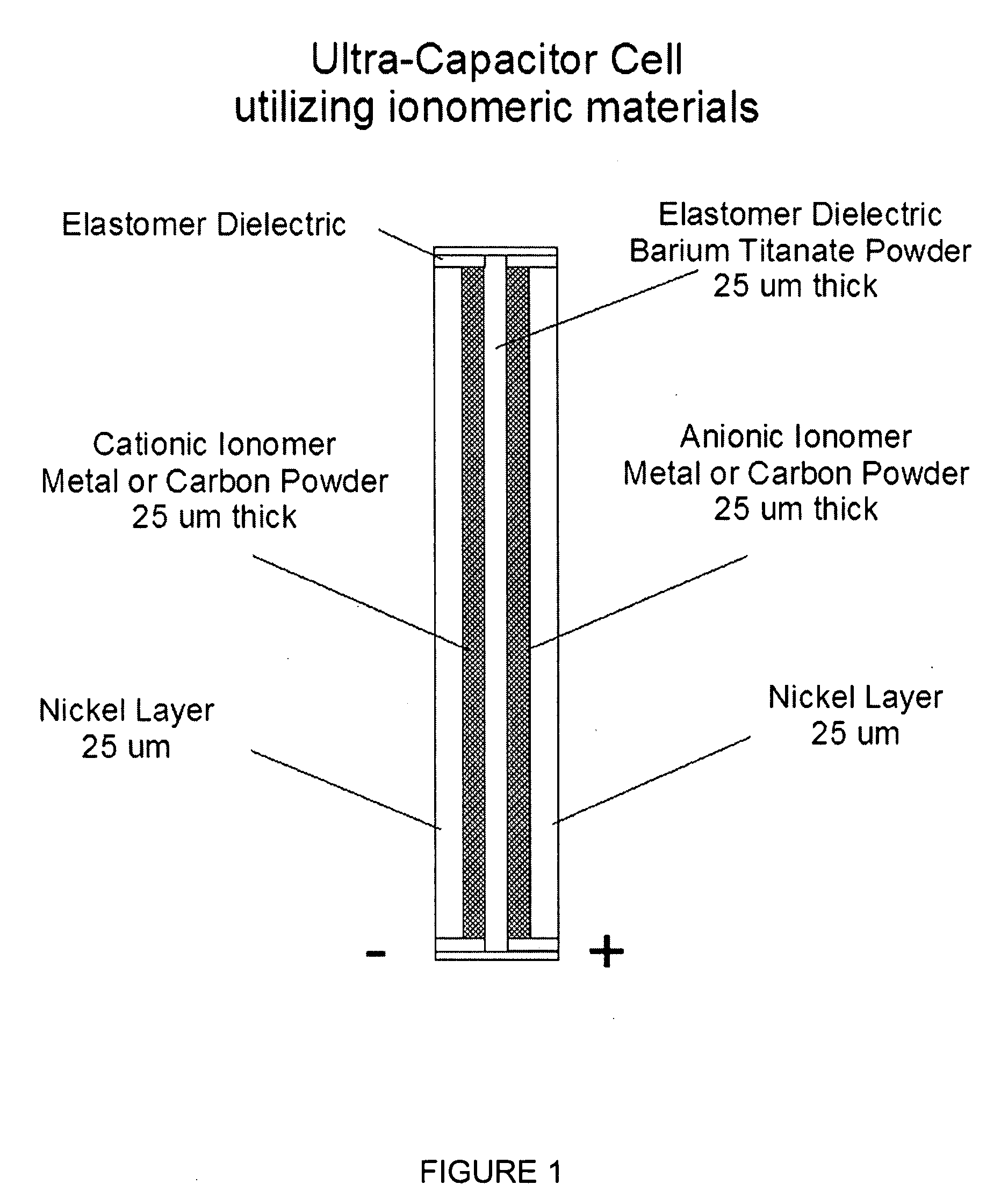Nanoparticle ultracapacitor
- Summary
- Abstract
- Description
- Claims
- Application Information
AI Technical Summary
Benefits of technology
Problems solved by technology
Method used
Image
Examples
examples
[0099]The following table indicates specific properties of one particular exemplary embodiment, compared with other capacitors or batteries in use today.
DaisMaxwellA123UltracapUltracapEEStorLithium ion(estimated)(spec sheet)UltracapbatteryEnergy Density600 (1)15 (2)700 (11)400 (3)(Wh / L)Specific Energy200 (1)4 to 6 (2)290 (11)150 (3)Wh / kgSelf Discharge2% / month (4)50% / month (5)0.02% / month (11)2% / month (3)RateSpecific Power>1500 (1, 6)>1500 (5)106 (11)200-400 (9)W / kgESR100 m-Ohm (6)65 m-Ohm (5)22 u-Ohm (11)11 Ohm (7)Storage−40 to +125 (8)−40 to +65 (2)??−50 to +60 (3)Temp Range (° C.)Operating−40 to +85 (8)−40 to +65 (2)−40 to +85 (11)−30 to +60 (3)Temp Range (° C.)Cyclic>10,000 (10)>500,000 (2)>1,000,000 (11)>1000 (3)Lifetime
Thus, preferred embodiments disclosed herein include capacitors of a 5-7 layer structure capable of sustaining voltages in excess of 3 volts per cell with an upper maximum of several thousand volts per cell. Certain preferred embodiments include a capacitor that i...
PUM
| Property | Measurement | Unit |
|---|---|---|
| Percent by mass | aaaaa | aaaaa |
| Percent by mass | aaaaa | aaaaa |
| Thickness | aaaaa | aaaaa |
Abstract
Description
Claims
Application Information
 Login to View More
Login to View More - R&D
- Intellectual Property
- Life Sciences
- Materials
- Tech Scout
- Unparalleled Data Quality
- Higher Quality Content
- 60% Fewer Hallucinations
Browse by: Latest US Patents, China's latest patents, Technical Efficacy Thesaurus, Application Domain, Technology Topic, Popular Technical Reports.
© 2025 PatSnap. All rights reserved.Legal|Privacy policy|Modern Slavery Act Transparency Statement|Sitemap|About US| Contact US: help@patsnap.com



